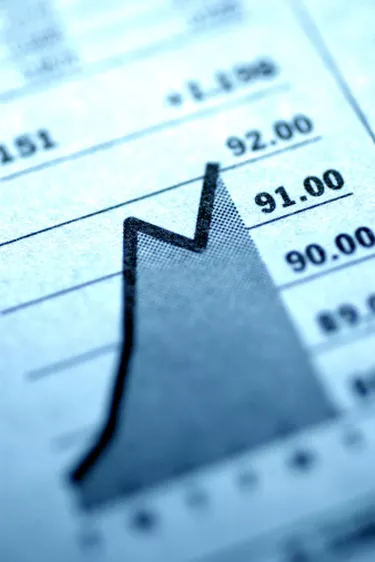
A bond is a debt instrument issued to raise money for an organization. In exchange for their initial investment, bond investors are paid their principal plus interest payments over the stated bond length. Credit risk management is used to evaluate the relative value of different bonds by examining their default risk and credit spread risk. The default risk and credit spread risk of bonds are different depending on the economy and the company issuing the bonds.
Default Risk
Video of the Day
Default risk is the risk that a bond issuer will not make its promised principal and interest payments. It is also known as a bond's credit risk. Issuers might miss bond payments when they experience cash flow problems and are on the verge of bankruptcy. When a bond issuer goes bankrupt, its bonds become worthless. Rating agencies such as Moody's give bonds a ranking on their default risk. Bonds rated with a high default risk are worth less than bonds considered safe by the rating agencies.
Video of the Day
Credit Spread Risk
The credit spread of a bond is the difference between its interest rate and the interest rate of a guaranteed asset like a Treasury Bond. Because companies have a greater risk of bankruptcy than the federal government, they must pay a higher interest rate than the federal government to investors who buy their bonds. Credit spread risk is the risk that an investor who has purchased a long-term bond has locked in to one that pays too little for its relative default risk. It is the investment gain that is lost by buying an underpaying investment with too low a credit spread.
State of Economy
In credit risk management, the relative importance of default risk and credit spread risk differs based on the current state of the economy. When the economy is weak, default risk is more important. The chance of companies going bankrupt and defaulting on bonds is much higher in a poor economy. Investors are more concerned with protecting their principal investment over total yields. But in a strong economy, credit spread risk is more important. The chance of bankruptcy is lower in a strong economy. Bond interest rates rise during a good economy as there is more demand for investment. The credit spread risk of getting locked into a poorly paying investment is a greater concern than default risk during a good economy.
Strength of Bonds
The strength of a bond issuer determines whether credit risk or default risk is more important. A strong company is considered by the rating agencies to have very low chance of bankruptcy. Because of this stability, it will offer a lower interest rate that is closer to the government rate. The chance of default is very low for a strong company, but credit spread risk is high because of its low interest rate. Riskier companies pay a higher interest rate to market their bonds. They have a lower credit spread risk in exchange for a greater chance of default.